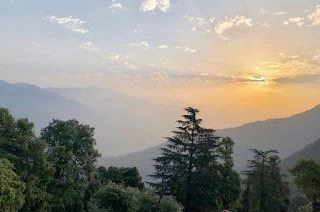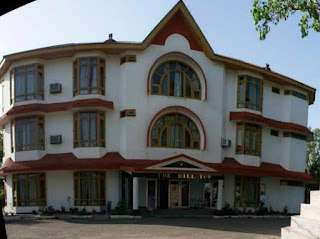Our country's history holds many unique places and incredible events that are worth examining.
During the Gangai dynasty emperors, *Talakadu*, located 40 kilometers from Mysore, was built. Subsequently, it prospered as the capital of numerous kingdoms, but it was cursed in the 16th century and is currently hidden by sand dunes and in the pages of history.
- Talakadu is a famous Hari Hara Kshetra.
- Talakadu is a deserted cursed city.
- Talakadu is a beautiful resort on the banks of Cauvery river.
I was immediately drawn to visit the place after reading about Talakadu. My wife prepared pulihora, bissibela bath, and daddhojanam and then packed them for our journey. The way was filled with beautiful coconut groves, orchards, and paddy fields. Karnataka state's roads are both wide and well-maintained.
While driving, I shared with my wife what I had learned about Talakadu. King Harivarma of the Gangakinda dynasty was responsible for building and ruling Talakadu town on the Kaveri river between AD 247 and 266. The Cholas assumed control of the city after them. Vishnuvardhana, the Hoysala king, overthrew the Cholas and developed Talakadu with approximately 30 temples. In the following years, the city was ruled by the Vijayanagara emperors.
The Vijayanagara Empire's representative, King Tirumala of Mysore, took over control of this city in 1610 A.D. Due to his prolonged illness, the King of Tirumala relinquished the empire to his wife Alamelu Devi and went to worship Lord Shiva at Vaidyanatheshwara Temple, Talakadu.
Rani Alamelu Devi knew about her husband's final hours and handed over the kingdom to her vassal Raja Odayar before heading to his place of death.
During Raja Odayar's attempt to capture the queen with a malacious intent, the queen unleashed three curses that would cause - Talakadu Kshetra to sink into the sand, her place of death in Malangi will transform into a whirlpool and Raja Odayar's clan will become annihilated and sacrificed her life by jumping into the Kaveri river.
It came as a surprise that the three events believed to be cursed by Rani Alamelamma actually happened. The river Kaveri, which had been flowing eastward until then, suddenly changed its course by 90° near Talakadu. The river's fine sand created a massive mound that gradually covered Talakadu town. One of history's brightest lights has disappeared into the sand and has become reminiscent of the desert.
Childlessness persisted for almost 400 years in the Odayar dynasty. The Maharajas of Mysore had to adopt the children of their relatives.
The temples currently visible were probably discovered during 1910 excavations directed by Sri Ganeshaya, an Indian archeologist. In his essay on excavations, Shri Ganeshaya has verified these historical features.
Both Shaivism and Vaishnava are worshipped at Talakadu Kshetra, which is now the most significant shrine.
In Talakadu, there are five Shiva temples, including Pathaleshwara, Maruleshwara, Arkeshwara, Vaidyanatheshwara, and Mallikarjuna temples, that represent five faces of Shiva. Among them, the Vaidehithesvara Temple is the most significant and spacious. This temple was created entirely in the Hoysala architectural style. Nandi and Bhringi sculptures are carved on either side of the main sanctuary. The image of a bull can be seen on the chest of the Nandi statue if you observe closely. The stone chains fashioned with serpentine stone reflect the sculptural talent of the period's sculptors. Inside the mantapala, the idols of Nataraja Swamy, Durga Devi, and Sharada Devi are exquisitely adorned. *Manonmani* is the name given to Goddess Parvati in this temple. The temple has numerous pillars that are adorned with artistic illustrations.
The path between Vaidyanatheswara Temple and Pataleswara Temple is entirely sandy. Trekking through the sandy terrain to reach the Pataleswara temple is an amazing adventure. Pataleswara Linga has a unique feature. This Linga changes color from red in the morning to black in the afternoon to white at night. The other three Shiva temples should also be visited.
The Lord Vishnu temple in Talakadu is another noteworthy shrine. Locals call it the *Kirthinarayana Temple*. The Department of Archaeology rebuilt the temple after it collapsed due to sand accumulation. The unfortunate thing is that every year little by little all these temples are sinking into the sand again. The dune has a mound-like shape and a desert-like appearance. The strange thing is that green fields and gardens can be seen from about one hundred yards away from that sandbank.
This Kirti Narayana Swamy temple stands out amidst the surrounding sand dunes.
The statue of "Srimannarayan" in the Sanctum Sanctum is an impressive 9 feet tall and showcases various notable features. These include Thiru namas, a Conic Chakra adorned with the Seal of blessing Kaumudi, and Padmas held in both hands, all complemented by a serene and smiling face. The desirable form of the swami fails to satisfy the mind, regardless of how long one contemplates it. Swami's Mohana Roopa left Sri Ramanuja in awe with his divine appearance. The amount of time we spent venerating the magnificent Kirti Narayan eludes my memory.
After receiving the divine blessings, we found solace under the shade of the serene trees and relished the pulihora and other delicacies we had carried along. The existence of monkeys in this region is a cause for concern.
The Cauvery river is located approximately 1.5 kilometers away from that place. The region has become a favored spot for travelers seeking adventure. Tourists can enjoy an exhilarating experience by going on a river rafting excursion. We spent Rs 200/- and embarked on a 45-minute rafting adventure on the Cauvery river.
Nevertheless, the enigma of Talakadu town will persistently confound individuals who seek to delve into history with a fresh perspective.
As we indulged in recollecting our travel adventures, our vehicle was swiftly traversing towards Mysore.
Y Dwaraka Nath
Mysore





































